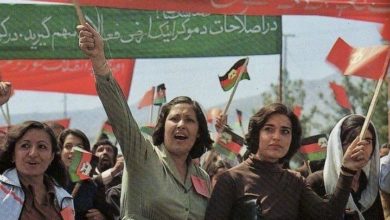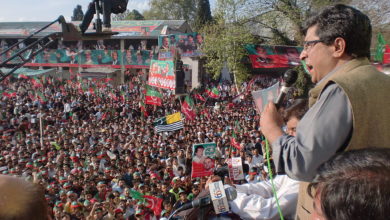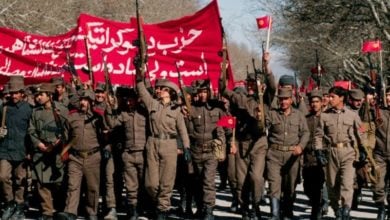 Photo: TC Malhotra |
In Nepal, the continued insurgency led by the Communist Party of Nepal (Maoist) triggered a backlash from monarchist-led military forces. In an outright coup, King Gyanendra announced the suspension of parliament on Feb. 1, rolling back fundamental democratic rights. There has been a virtual media black out: All non-governmental communication with the outside world has been cut indefinitely.
Nepalese government troops unleashed a wave of terror following the coup. A March 8 report in the British newspaper Telegraph described “700 homes burnt and 30 people lynched” in counter-insurgency campaigns.
The crisis was precipitated by a general strike, called by the insurgency, which brought much of the country outside of Katmandu to a virtual standstill. To suppress popular support for the insurgency, the military detained or put under house arrest leaders of all the major political parties and trade unions.
The military crackdown, however, has not stopped the rebels from operating. In a daring March 6 attack on government buildings in the southwestern Sandhikharka district, rebels torched thirteen government buildings. This attack came on the heels of government statements that, despite King Gyanendra’s martial law, a clear roadmap to peace and democracy has been established.
 Photo: Reuters/Albeiro Lopera |
On Feb. 21, Colombian government soldiers brutally murdered seven peace activists. According to a report released by the Comunidad de Paz of San José De Apartado, the XI Brigade of the Colombian Army killed the founder of the community, Luis Eduardo Guerra, along with six other people. Among the dead were three children.
The attack comes as the latest in a long string of repressive acts carried out by the Colombian government. The Comunidad de San José was formed in 1997. Since then, it has lost over 150 community members at the hands of the government army, or state-sponsored paramilitary death squads.
This tragic event came just as the U.S. government hoped to certify the Colombian state as a protector of human rights. The attack, however, took place on a community unaffiliated with insurgent groups, thus leaving the U.S. and Colombian governments without their typical justifications. The killings lay bare the nature of the U.S.-Colombian military campaign.
 Photo: Reuters/Rickey Rogers |
In another setback for traditional U.S.-backed politicians in South America, Tabaré Ramón Vásquez Rosas was inaugurated on March 1 as the first leftist president in Uruguay’s history. Among the leaders at his inauguration were President Chávez of Venezuela and Brazil’s President da Silva. Fidel Castro had been invited but was unable to attend. His invitation marks an important break with former Uruguayan administrations.
Vásquez immediately restored full diplomatic ties with Cuba—an act that follows the will of the Uruguayan people, not the dictates of policymakers in Washington. Among other promising proposals, Vásquez has vowed to fight the foreign debt imposed by the World Bank and the IMF. He has also proposed a $100 million social plan to begin to address the basic needs of the people.
 Photo: EPA/Humayoun Shiab |
In a sign of the deteriorating situation in war-ravaged Afghanistan, the U.S. State Department released a report on March 4 admitting that Afghanistan’s opium cultivation reached an all-time high in 2004. Last year, 510,000 acres of Afghani land yielded more than 4,950 tons of opium—about 85 percent of the world’s opium production.
There are 17,900 U.S. troops remaining in Afghanistan. They prop up the puppet government of Hamid Karzai. The State Department report is further supported by a March 7 United Nations Office for Drug Control study that cited a 64 percent increase in poppy cultivation in 2004. Local government officials have been utterly complicit in the drug cultivation market. The cooperation between the Afghan government and U.S. forces points to U.S. complicity, if not outright encouragement, for the sharp increase in the narcotics trade.





